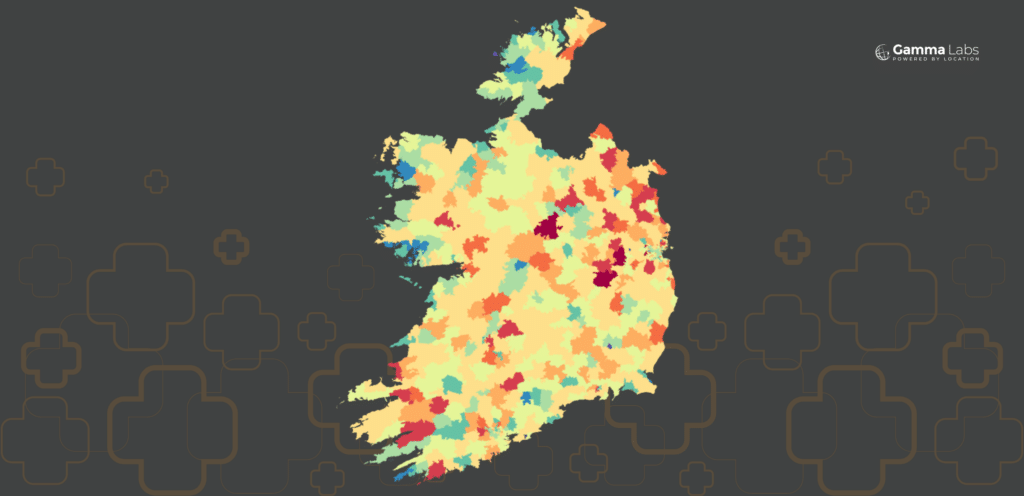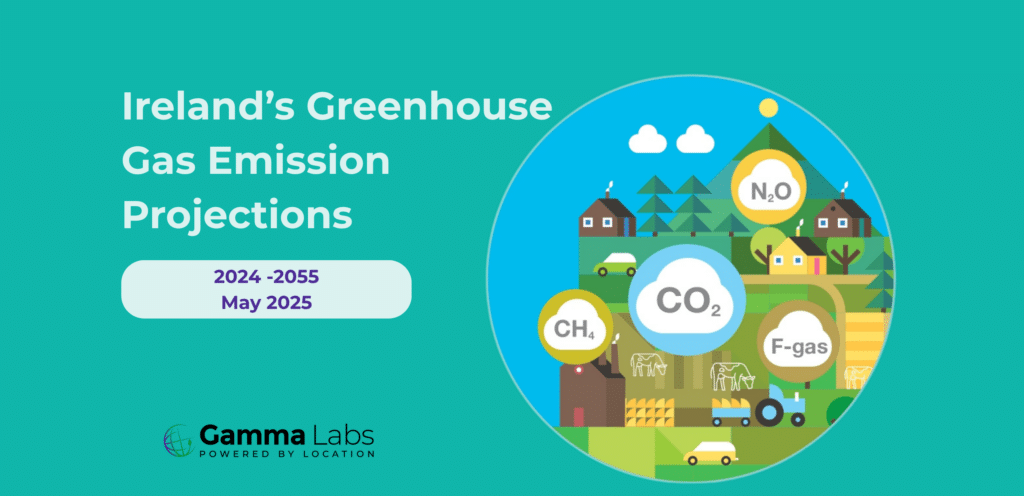Census 2016 – What we’re looking forward to – SAPS edition

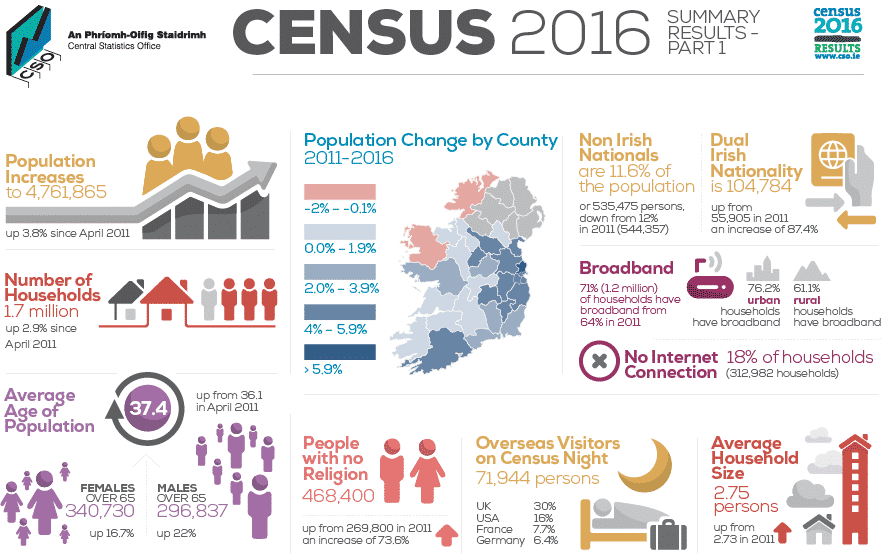
Census 2016 Summary Results – Part 1
A year after it was conducted, publication of the 2016 Census is underway, with Part 1 of the summary results published in April, and Part 2 released today. The full publication schedule can be seen on the CSO website. At Gamma, we make extensive use of Census data. It is a key dataset for our Storecast™ systems, we rely on it for Location Profiling and is used daily by our consultants.
We are eagerly awaiting the publishing of the Small Area Population Statistics (SAPS) on the 20th July, as this is the dataset which we make the most use of. The SAPS dataset from 2011 contained 764 variables, from the number of males less than one-year-old to the number of households with broadband internet access. It is possible to derive a countless number of other variables from this data. At Gamma, we build models of Household Lifestage from the age and household composition variables. Our Household Income model draws on 14 separate variables and our location profiling reporting engine uses over 100 census variables.
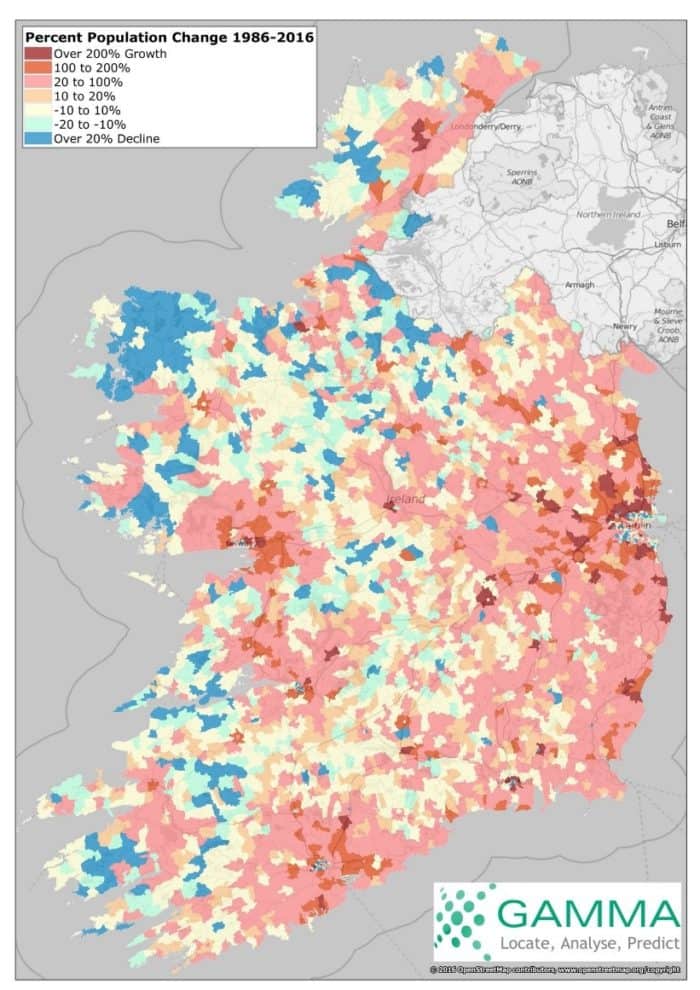
The 2016 census was a ‘no change’ census, with the same questions being asked as in 2011. This allows for easy comparisons across the 2011-2016 period. We will be updating our models, reporting tools and analytics with the 2016 data as soon as it is published.
Census 2016 will see SAPS published at the Small Area (SA) for the second time, following their introduction in 2011. As a result, time series analysis at this micro-geography level will be possible for the first time. The 2011 and 2016 SA’s are not exactly the same, some have been merged, due to decreasing population, while other SA’s that have seen population increases have been split. It is currently estimated that about 300 of the 18,500 SA’s have changed. We are in the process of building an SA dataset which allows for time series analysis across the censuses of 2011 and 2016 at SA level.
In advance of the release of the SAPS, the CSO have released some data at Electoral Division (ED) level, including the raw headcount information for each ED. ED’s can also change from census to census, merging neighbouring areas where population decline puts confidentiality at risk. However, EDs are not split when their population increases, and this has resulted in some EDs having very large populations, Blanchardstown-Blakestown is a typical example of that: its 2016 population of 38,924 is significantly larger than the entire county of Leitrim. At Gamma, we track these changes, as they allow us to produce time series data at ED level for up to 30 years.
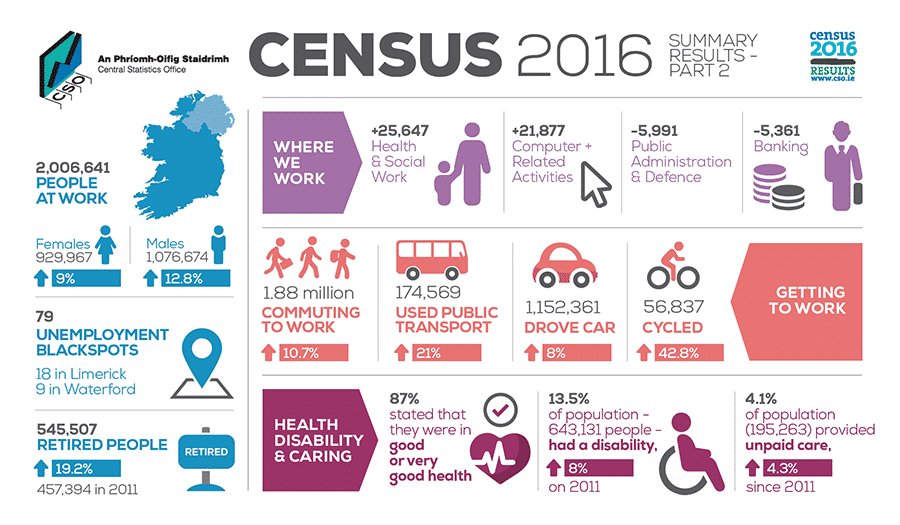
Census 2016 Summary Results – Part 2
@ 2017 Gamma.ie by Richard Cantwell
About Gamma
Gamma is a Location Intelligence (LI) solutions provider; we integrate software, data and services to help our clients reduce risk through better decision-making. Gamma was established in 1993 and was the first company to develop LI for the private sector in Ireland. The company has expanded to become a global provider of cloud-hosted LI systems, micro-marketing solutions and related services.


